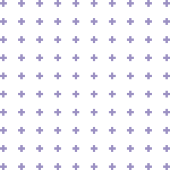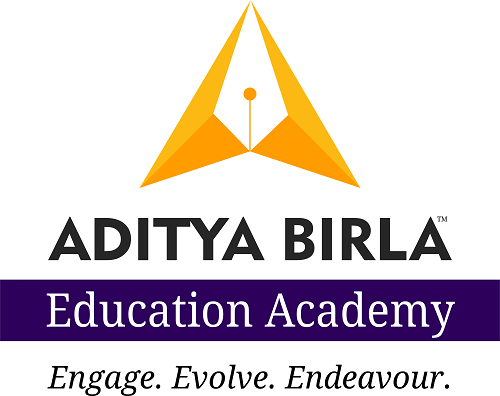Why is Blended Learning a perfect match for Inclusive Education?

In the current post pandemic world, schools have had to adapt to a new normal, and blended learning though having been here for a while, has come to the fore. In the current scenario, this format had to further adapt to a completely online model making the brick and mortar classrooms no longer a possibility. A new blended version 2.0 that became solely driven through technology saw the need to balance synchronous sessions using google meet, zoom etc. and asynchronous learning platforms through google classrooms, interactive decks such as Nearpod and Peardeck, interactive whiteboard, customised video lessons amongst many others.
This sudden virtual learning with social isolation raised a number of questions in terms of inclusion- will such high technology dependency lead to similar outcomes for all, will those students who have attention focus and other learning challenges lose out and will lack of social interactions lead to mental health concerns?
Equitable access to online learning is a pressing concern in a country like India especially for the economically marginalised communities, however, what has stood out in schools that were more privileged to be able to carry out online learning was that blended and hybrid formats were quickly understood as the optimal mode. As we move to the possibility of reopening schools, Blended Learning will be a perfect solution to marry the best of the two worlds- of a brick and mortar school with that of a model where a student also learns partially-
Off line away from the physical bounds of a classroom with a teacher and online using technology tools with the fundamental principle of using an individualized learning pathway.
In its vision of moving along a learner's personalised pathway, blended learning lends itself to integrating diverse learners and bringing inclusion within the classroom rather than the usual segregation models of pull outs and 1-1 sessions.
Through an internal survey done in school (Bombay International School) we found that the new normal way of learning had mixed responses. It did reflect that this method supported the more vulnerable and at risk students who struggle with behavior problems, learning disabilities, low self-esteem, and a myriad of other problems. Many of such students reported being happy to be at home with online learning as it relieved social pressure. It allowed support from home and also with asynchronous learning gave ability to self-pace and repeat.
Students seemed to enjoy using technology, however many felt it was difficult to sustain engagement on zoom classes and many grappled with self-regulation to complete tasks independently. There were some who reported missing friends and felt low, school planned assemblies, games, well-being sessions and co-curricular classes such as art, drama, dance etc albeit virtually did alleviate some of these concerns. So, the sudden compulsion to try online and tech enabled solutions actually seemed to help students and make learning adaptive in terms of pace, allowed the safety of home away from social exclusion and the ability to choose more ways than just one.
Universal Design for Learning (UDL) is a well known framework that is based on a scientific understanding of how people learn. The goal of UDL is to design barrier-free, instructionally rich learning environments and lessons that provide access to all students. The UDL framework aims to help educators think about and design learning experiences that allow all students to be successful.
This has been evidenced as an effective framework to incorporate inclusive learning Working with schools that have already adopted the UDL framework, one immediately recognizes how blended learning can aid teachers to implement many of the principles of UDL more effectively. UDL and blended learning are not to be considered two separate disconnected approaches to teaching and learning, it is essential to explore the overlap between the two. Blended learning models can make putting UDL into practice more manageable for educators.
When teachers shift from a one-size-fits-all approach to differentiating and personalizing learning, it is natural to consider what individual learners need to make progress toward learning goals.
Blended learning is the future, one that is not only rooted in sound fundamentals of how learning should be, but also an answer to inclusion. When students receive education in the least restrictive environment that is flexible, inclusive and blended, they will be successful academically and socially.
This sudden virtual learning with social isolation raised a number of questions in terms of inclusion- will such high technology dependency lead to similar outcomes for all, will those students who have attention focus and other learning challenges lose out and will lack of social interactions lead to mental health concerns?
Equitable access to online learning is a pressing concern in a country like India especially for the economically marginalised communities, however, what has stood out in schools that were more privileged to be able to carry out online learning was that blended and hybrid formats were quickly understood as the optimal mode. As we move to the possibility of reopening schools, Blended Learning will be a perfect solution to marry the best of the two worlds- of a brick and mortar school with that of a model where a student also learns partially-
Off line away from the physical bounds of a classroom with a teacher and online using technology tools with the fundamental principle of using an individualized learning pathway.
In its vision of moving along a learner's personalised pathway, blended learning lends itself to integrating diverse learners and bringing inclusion within the classroom rather than the usual segregation models of pull outs and 1-1 sessions.
Through an internal survey done in school (Bombay International School) we found that the new normal way of learning had mixed responses. It did reflect that this method supported the more vulnerable and at risk students who struggle with behavior problems, learning disabilities, low self-esteem, and a myriad of other problems. Many of such students reported being happy to be at home with online learning as it relieved social pressure. It allowed support from home and also with asynchronous learning gave ability to self-pace and repeat.
Students seemed to enjoy using technology, however many felt it was difficult to sustain engagement on zoom classes and many grappled with self-regulation to complete tasks independently. There were some who reported missing friends and felt low, school planned assemblies, games, well-being sessions and co-curricular classes such as art, drama, dance etc albeit virtually did alleviate some of these concerns. So, the sudden compulsion to try online and tech enabled solutions actually seemed to help students and make learning adaptive in terms of pace, allowed the safety of home away from social exclusion and the ability to choose more ways than just one.
Universal Design for Learning (UDL) is a well known framework that is based on a scientific understanding of how people learn. The goal of UDL is to design barrier-free, instructionally rich learning environments and lessons that provide access to all students. The UDL framework aims to help educators think about and design learning experiences that allow all students to be successful.
This has been evidenced as an effective framework to incorporate inclusive learning Working with schools that have already adopted the UDL framework, one immediately recognizes how blended learning can aid teachers to implement many of the principles of UDL more effectively. UDL and blended learning are not to be considered two separate disconnected approaches to teaching and learning, it is essential to explore the overlap between the two. Blended learning models can make putting UDL into practice more manageable for educators.
When teachers shift from a one-size-fits-all approach to differentiating and personalizing learning, it is natural to consider what individual learners need to make progress toward learning goals.
Blended learning is the future, one that is not only rooted in sound fundamentals of how learning should be, but also an answer to inclusion. When students receive education in the least restrictive environment that is flexible, inclusive and blended, they will be successful academically and socially.

Chat Now





